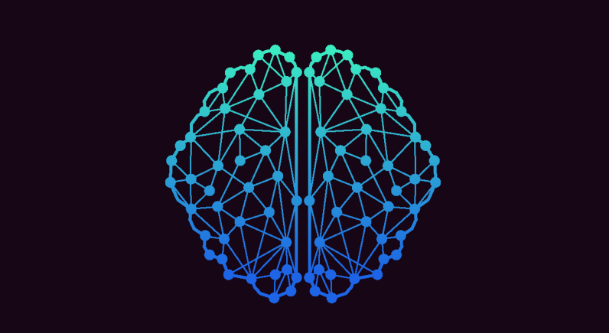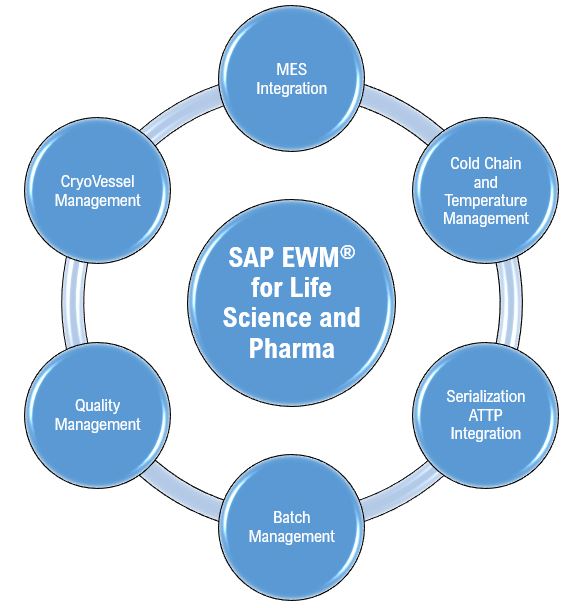Welcome to the first installment of our comprehensive 5-part series on Retrieval-Augmented Generation (RAG). Whether you’re an AI enthusiast, developer, or business leader, this series will take you from RAG fundamentals to advanced implementation strategies.
The AI Revolution’s Next Chapter
Picture this: You’re having a conversation with an AI assistant about the latest breakthrough in quantum computing, but the AI’s knowledge stops at 2023. It confidently tells you about developments that never happened, mixing outdated information with fabricated “facts.” Sound familiar? This scenario plays out millions of times daily across AI applications worldwide, highlighting one of the most pressing challenges in artificial intelligence today.
Enter Retrieval-Augmented Generation (RAG) – the game-changing approach that’s transforming how AI systems access, process, and deliver information. If you’ve been anywhere near the AI community lately, you’ve undoubtedly encountered discussions about RAG. And there’s a compelling reason for this surge in attention.
The Numbers Don’t Lie: RAG’s Meteoric Rise
The statistics surrounding RAG adoption are nothing short of remarkable. According to Grand View Research – a leading market intelligence firm trusted by Fortune 500 companies for their rigorous industry analysis – the RAG market reached approximately $1.2 billion in 2024[1]. But here’s where it gets truly interesting: experts project this market will explode at a staggering 49% compound annual growth rate, potentially reaching $11 billion by 2030[1].
These aren’t just numbers on a spreadsheet; they represent a fundamental shift in how organizations approach AI implementation. From startups to enterprise giants, everyone is recognizing that RAG isn’t merely a technological trend – it’s becoming the backbone of reliable, intelligent AI systems.
The Hallucination Problem: Why Traditional LLMs Fall Short
To understand RAG’s revolutionary impact, we need to examine the core limitation it addresses. Large Language Models (LLMs), despite their impressive capabilities, suffer from a critical flaw: knowledge cutoff dates. These models are trained on massive datasets – trillions of words scraped from across the internet – but their learning stops at a specific point in time[2].
The Training Data Dilemma
Consider the challenge: LLMs digest everything from peer-reviewed research papers to conspiracy theories, from Wikipedia articles to social media posts. While this comprehensive approach gives them broad knowledge, it also means they can’t distinguish between authoritative sources and questionable content during training. The result? When you ask about recent events or need current information, these models might confidently deliver fabricated answers – a phenomenon researchers call “hallucination”[2].
This isn’t a minor inconvenience; it’s a fundamental barrier to deploying AI in critical applications where accuracy matters.
The Continuous Learning Challenge
You might wonder: “Can’t we just retrain these models continuously?” Unfortunately, the answer is more complex than a simple yes or no. Current LLM architectures don’t support seamless, continuous learning. Retraining requires enormous computational resources, extensive time, and careful curation of new data. For most organizations, this approach is neither practical nor economically viable.
RAG: The Elegant Solution
This is where Retrieval-Augmented Generation shines with its elegantly simple yet powerful approach. Instead of trying to teach LLMs everything upfront, RAG provides them with real-time access to relevant, current information right when they need it.
How RAG Works: The Three-Step Dance
- Retrieval: When you ask a question, the system searches through current databases, documents, or web sources to find relevant information
- Augmentation: This retrieved content gets added to your original query, creating a comprehensive prompt
- Generation: The LLM uses both your question and the fresh, relevant data to craft an accurate, well-informed response
Think of it as giving an expert researcher instant access to the world’s most current library while they’re answering your questions.
The Transformative Benefits of RAG
- Reduced Hallucinations: Ground AI responses in factual, retrievable data with source citations
- Economic Efficiency: Avoid expensive retraining cycles while maintaining current information
- Developer Control: Enhanced flexibility in managing data sources and security measures
1. Eliminating the Guesswork: Reduced Hallucinations
RAG’s most celebrated advantage is its ability to ground AI responses in factual, retrievable data. Instead of relying solely on potentially outdated training data, RAG-enhanced systems can cite current research papers, recent statistics, breaking news, and verified sources[3]. This transparency allows users to verify information and builds trust in AI-generated responses.
2. Economic Efficiency: Smart Resource Management
Traditional approaches to keeping AI systems current require expensive retraining cycles. RAG offers a more economical alternative by leveraging external data sources as needed, without requiring complete model overhauls. This approach makes advanced AI capabilities accessible to organizations with limited budgets or technical resources.
3. Developer Empowerment: Enhanced Control and Flexibility
RAG puts unprecedented control in developers’ hands. They can:
- Curate specific knowledge sources for their applications
- Update information repositories in real-time
- Implement security measures for sensitive data
- Customize retrieval strategies for different use cases
This flexibility comes with responsibility – developers must ensure data quality and appropriate access controls, but the trade-off enables more precise, domain-specific AI applications.
The Architecture Behind the Magic
Understanding RAG’s power requires examining its core components, each playing a crucial role in delivering intelligent, accurate responses.
1. Data Preparation and Management – The Foundation
Every successful RAG system begins with meticulous data preparation. This isn’t just about collecting information; it’s about transforming raw data into a format that enables lightning-fast, accurate retrieval.
- Chunking and Vectorization: Raw documents get broken into optimal-sized pieces – not too large to lose specificity, not too small to lose context. These chunks then get converted into mathematical representations (vectors) that computers can efficiently search and compare.
- Metadata and Organization: Each data chunk receives descriptive tags, summaries, and contextual information – like creating a comprehensive card catalog for a vast digital library.
- Quality Control: Clean, well-structured data directly translates to accurate results. This stage involves removing noise, standardizing formats, and ensuring consistency across all information sources.
- Format Flexibility: Enterprise data comes in countless formats – PDFs, spreadsheets, emails, web pages. Robust RAG systems handle this diversity seamlessly, extracting valuable information regardless of its original format.
2. User Input Processing – The Intelligent Interface
RAG systems don’t just passively wait for queries; they actively optimize and secure user interactions.
- Query Enhancement: User questions get refined and optimized to improve retrieval accuracy. The system understands that “What’s the latest on climate change?” and “Recent climate change developments” are seeking similar information.
- Security and Filtering: Not all inputs are benign. This component filters out potentially malicious queries while ensuring legitimate requests get processed efficiently.
- Contextual Memory: Advanced RAG systems remember conversation history, enabling more natural, context-aware interactions that build upon previous exchanges.
3. The Retrieval Engine – The Smart Scout
The retrieval system serves as RAG’s intelligence hub, efficiently locating the most relevant information from vast data repositories.
- Intelligent Indexing: Like organizing a massive library for instant access, sophisticated indexing strategies enable rapid data retrieval even from enormous datasets.
- Precision Tuning: Fine-tuning parameters like similarity thresholds and result quantities optimizes the balance between comprehensiveness and relevance.
- Result Optimization: Initial search results get reranked to prioritize the most pertinent information, ensuring users receive the highest-quality responses.
4. Generation – The Articulate Synthesizer
The final component transforms retrieved information into coherent, useful responses while maintaining safety and personalization.
- Intelligent Synthesis: State-of-the-art LLMs weave retrieved data into clear, comprehensive answers that address user queries directly and accurately.
- Safety Guardrails: : Built-in moderation systems prevent inappropriate or biased content, ensuring responses meet quality and ethical standards.
- Performance Optimization: Caching frequently requested information reduces response times and computational overhead.
- Personalization: Responses adapt to user preferences, professional contexts, and specific requirements, creating more relevant and useful interactions.
Looking Ahead: The Future is RAG-Powered
As we conclude this foundational exploration of RAG, it’s clear that we’re witnessing the emergence of a technology that will fundamentally reshape how we interact with AI systems. The combination of current information access, reduced hallucinations, and economic efficiency positions RAG as more than just a technical improvement – it’s an enabler of trust and reliability in AI.
The rapid market growth projections aren’t just optimistic forecasts; they reflect a genuine recognition that RAG addresses critical limitations in current AI systems while opening new possibilities for innovation and application.
The RAG revolution is just beginning, and understanding its foundations positions you at the forefront of AI’s next evolutionary leap.
References
[1] Grand View Research. “Retrieval Augmented Generation Market Size, Share & Trend Analysis Report.” Market Intelligence Report, 2024.
[2] Brown, T., et al. “Understanding the capabilities and limitations of large language models.” Nature Machine Intelligence, 2023.
[3] Lewis, P., et al. “Retrieval-Augmented Generation for Knowledge-Intensive NLP Tasks.” Proceedings of the Neural Information Processing Systems, 2020.
Stay tuned for Part 2 of our RAG series, where we’ll explore the cutting-edge techniques that are pushing the boundaries of what’s possible with Retrieval-Augmented Generation.










